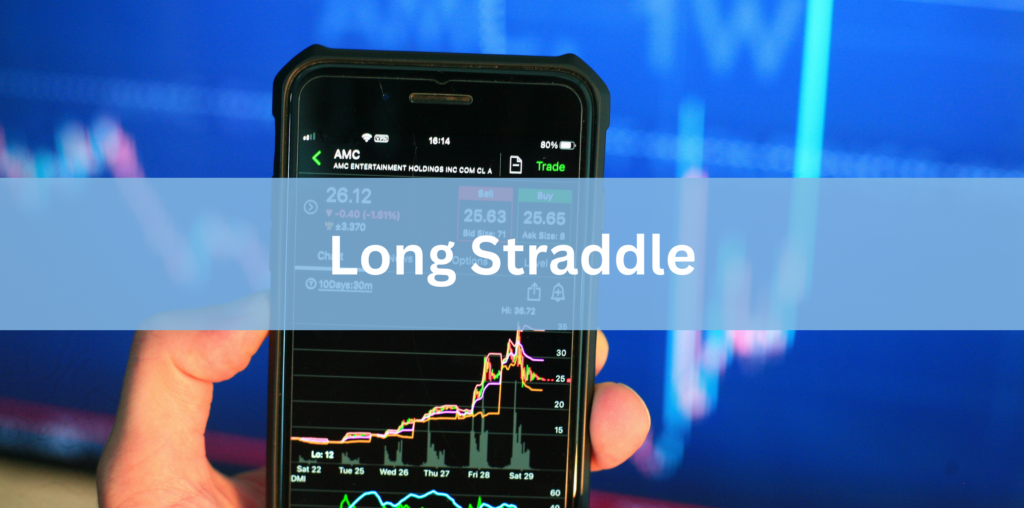What is Long Straddle? Effective Strategies for Best Results
Introduction to Long Straddle
As a share market expert, it’s crucial to have a comprehensive understanding of various trading strategies that can generate significant returns in different market scenarios. One such strategy is the long straddle, which empowers traders to benefit from substantial price movements without predicting market direction. In this article, we will explore the intricacies of a long straddle and discuss effective strategies that can be employed in various market conditions. Armed with expert insights and real-world experience, you’ll be well-equipped to navigate the share market with confidence.

What is a Long Straddle?
A long straddle is an options trading strategy that involves the simultaneous purchase of a far out-of-the-money (OTM) call option and a far OTM put option on the same underlying asset with the same expiration date. This strategy is employed when traders anticipate significant price volatility but are unsure about the direction in which the asset’s price will move.
The long straddle is named for the position’s resemblance to a “straddle” around the current market price of the asset, with both the call and put options creating a “straddle” effect. Traders who implement this strategy are looking to profit from substantial price swings in either direction.
Long Straddle Strategies for Different Market Conditions
Strategy 1: The Earnings Straddle
During earnings season, companies’ financial results often lead to considerable share price fluctuations. Traders can use the earnings long straddle strategy by simultaneously buying both call and put options just before the earnings announcement. This approach allows traders to capitalize on the expected price movement resulting from the earnings report, regardless of whether it drives the price up or down.
Strategy 2: The High Volatility Straddle
In times of heightened market volatility caused by events such as geopolitical uncertainties or economic data releases, traders can adopt the high volatility straddle strategy. By purchasing both call and put options with strike prices far from the current market price, traders seek to profit from significant price swings.
Strategy 3: The Low Volatility Long Straddle
Unlike the high volatility straddle, the low volatility long straddle is used when market conditions are relatively stable, and the asset’s price is expected to remain within a narrow range. Traders purchase both call and put options with strike prices closer to the asset’s current price, aiming to benefit from a potential breakout or trend reversal.
Also Read: What Is Long Strangle? Effective Strategies Of Long Strangle
Strategy 4: The Pre-Event Straddle
Before major events like central bank announcements, economic data releases, or geopolitical developments, traders can utilize the pre-event straddle strategy. By buying both call and put options, traders expect substantial market movement due to the event’s impact, irrespective of the direction.
Strategy 5: The Delta-Neutral Long Straddle
A delta-neutral straddle involves balancing the net delta of the combined options position to be close to zero. This is achieved by adjusting the number of contracts or strike prices. By maintaining a delta-neutral position, traders aim to profit from volatility while minimizing exposure to price movements in the underlying asset.
Strategy 6: The Trend Reversal Straddle
When a share market is experiencing a strong trend, traders can implement the trend reversal straddle strategy. By purchasing both call and put options, traders anticipate an imminent trend reversal and aim to profit from the subsequent significant price movement.
FAQs
Q: What is the risk associated with a long straddle strategy?
A: The main risk of a long straddle is the potential loss of the premiums paid for the call and put options if the underlying asset’s price remains relatively stable. The strategy is profitable only if there is sufficient price movement to overcome the initial premium costs.
Q: How is the profit potential in a long straddle strategy determined?
A: The profit potential in a long straddle is theoretically unlimited on both the upside and downside. Traders profit from significant price movement in either direction, as long as the movement exceeds the combined cost of the call and put options.
Q: Can I implement a long straddle strategy on any asset in the share market?
A: Yes, a long straddle can be employed on various assets, including stocks, commodities, and indices, as long as they have options contracts available.
Q: Is the long straddle suitable for beginners?
A: The long straddle is a more advanced options strategy and may not be suitable for beginners due to its complexity and the potential for substantial losses if the market does not move as expected. Traders should have a solid understanding of options trading before attempting this strategy.
Q: When is the best time to use a long straddle strategy?
A: The long straddle strategy is best suited for periods of anticipated high market volatility or when a significant event is expected to impact the share market. Traders should carefully assess market conditions and potential price movement before implementing this strategy.
Q: Can I adjust my long straddle position as market conditions change?
A: Yes, traders can adjust their long straddle position by buying or selling additional options or changing the strike prices to adapt to changing market conditions. It is essential to stay flexible and be prepared for adjustments when necessary.
Conclusion: Long Straddle
As a share market expert, mastering the long straddle strategy can offer lucrative opportunities to profit from significant price movements without the need to predict market direction. By understanding the mechanics of this versatile options trading strategy and applying the appropriate long straddle strategies based on market conditions, you’ll enhance your ability to make informed and successful trading decisions.




